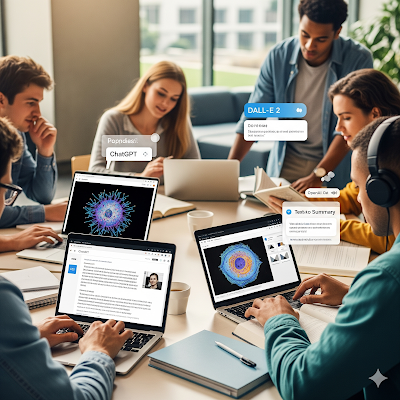Is Privacy Dead in 2025? 10 Privacy Loopholes and 5 Quick Solutions
The End of Privacy
Your phone is an obedient snitch. It remembers your searches, your late-night scrolls, the street you walked last Tuesday. Those crumbs don’t disappear; they’re picked up, bought, and stacked into a file on you.
Privacy didn’t explode — it leaked away, click by click, app by app.
1. Why privacy feels dead (but isn’t totally gone)
Privacy didn’t vanish in a single theft. It evaporated, drop by drop. Every app permission, every “I agree” click, every location ping is a tiny hole in the dam. Alone they’re small; together they flood your life into somebody else’s database.
I used to joke that my phone knows me better than my best friend. Now I’m sure it’s not a joke. This is how modern surveillance works: convenience on the outside, a ledger of you on the inside.
2. You as a ledger: what companies really collect
Think of your life as a tree in an orchard. Apps pick your leaves — purchases, searches, likes, location. Data brokers gather those leaves into crates and sell them. Advertisers don’t have to guess; they buy the crate, open it, and target you. Privacy didn’t end with a bang — it ended with a tap, a scroll, and an ‘Accept All Cookies’ button we barely even read.
The harvesting economy is massive and mostly invisible.
3. Location data: your private map for sale
Location trails are the skeleton key. Where you sleep, where you see a doctor, who you meet — all mapped. That map can help traffic flow, sure. But it can also be used for stalking, blackmail, or political targeting.
When location is traded like corn, your intimate life becomes public trade.
4. Cameras turned into sentinels
CCTV used to be “for safety.” Now they’re everywhere, smarter and cheaper. Modern cameras don’t just record — they analyze: faces, movement, even gait. Hook those eyes to algorithms and you move from being seen to being labeled.
5. Facial recognition: biased lenses, unfair outcomes
Facial-recognition systems look like facts but behave like opinions. Tests show they work worse on certain skin tones and age groups. That’s not a small bug — it’s a dangerous bias. When a system misidentifies you, the result can be humiliation, wrongful stops, or worse.
Tech isn’t neutral; it carries the messiness of its makers.
6. Social credit and the slow normalization of scoring people
“Social credit” sounds sci-fi, but the reality is bureaucratic and boring — and therefore dangerous. Where behavior is scored and tied to services, people start policing themselves. The power of exclusion becomes a quiet tool for control: fewer loans, less mobility, fewer chances.
That’s not dystopia; it’s policy.
7. Deepfakes: when your face and voice become weapons
Deepfakes are the new tricks of deception. A perfect fake video or an AI-generated voice can impersonate anyone. That’s not just viral humor — it’s a new way to blackmail, bully, to wreck reputations, and to sow chaos.
Related: Bullying
Detection exists, but the fakemakers’ tools improve faster than the detectors.
Case Study 1: Clearview AI
Clearview AI scraped billions of photos from social media without consent, building a massive face-recognition database used by police. Critics call it “the end of anonymity.” Imagine posting a graduation selfie and years later having it used to identify you at a protest.
One company’s dataset made every face searchable, whether you wanted it or not.
Case Study 2: Strava’s fitness map that revealed secret bases
In 2018, fitness app Strava proudly published a “heat map” of user activity worldwide. What they didn’t expect: the glowing jogging routes of soldiers around military bases, some in classified locations. A harmless-seeming dataset became a security risk overnight, proving how easy it is for private data to spill into public danger.
8. Who wins (and who bleeds)
- Winners: platforms that sell attention, firms that sell profiles, governments that gain control tools.
- Losers: ordinary people who carry permanent records of mistakes; communities over-policed by biased systems; survivors whose escape routes are tracked.
The ledger of your life creates value for others and liabilities for you.
9. Quick Wins: Real Moves to Use Today
-
Audit your apps: Uninstall the ones you don’t trust. If it’s free and feels invasive, remove it. Delete the cache for more privacy.
-
Lock down location: Give apps location only when actively used. Switch off otherwise.
-
Use privacy tools: Browsers with tracking protection, VPNs for sketchy Wi-Fi. They are basic surviving tools.
-
Demand deletion: Ask companies to delete your data and keep the receipts. Companies owe us that transparency.
-
Support policy fights: Regulations matter — pressure lawmakers. It’s how systems have been changed over the centuries. Awareness and action today ensure that future generations can live and breathe more freely.
These are small but practical acts; privacy is infrastructure of freedom, not nostalgia.
10. Laws matter — but watch for the loopholes
Regulation helps: the EU’s stronger rules and new enforcement actions crack open the ledger. But companies adapt and shift worse practices elsewhere. Rules are a stopgap; culture and design choices are the long game.
I don’t think privacy’s dead — I think we just traded it for comfort. The real question is: was that ever a fair deal?
Sources (key references)
-
Shoshana Zuboff — The Age of Surveillance Capitalism.
-
NIST studies on facial-recognition bias.
-
FTC + consumer-rights reporting on data brokers.
-
CCTV/smart camera market growth data.
-
Europol + CSET on deepfake threats.
-
Clearview AI reporting.
-
Strava fitness map incident.
-
Recent EU regulatory actions.






